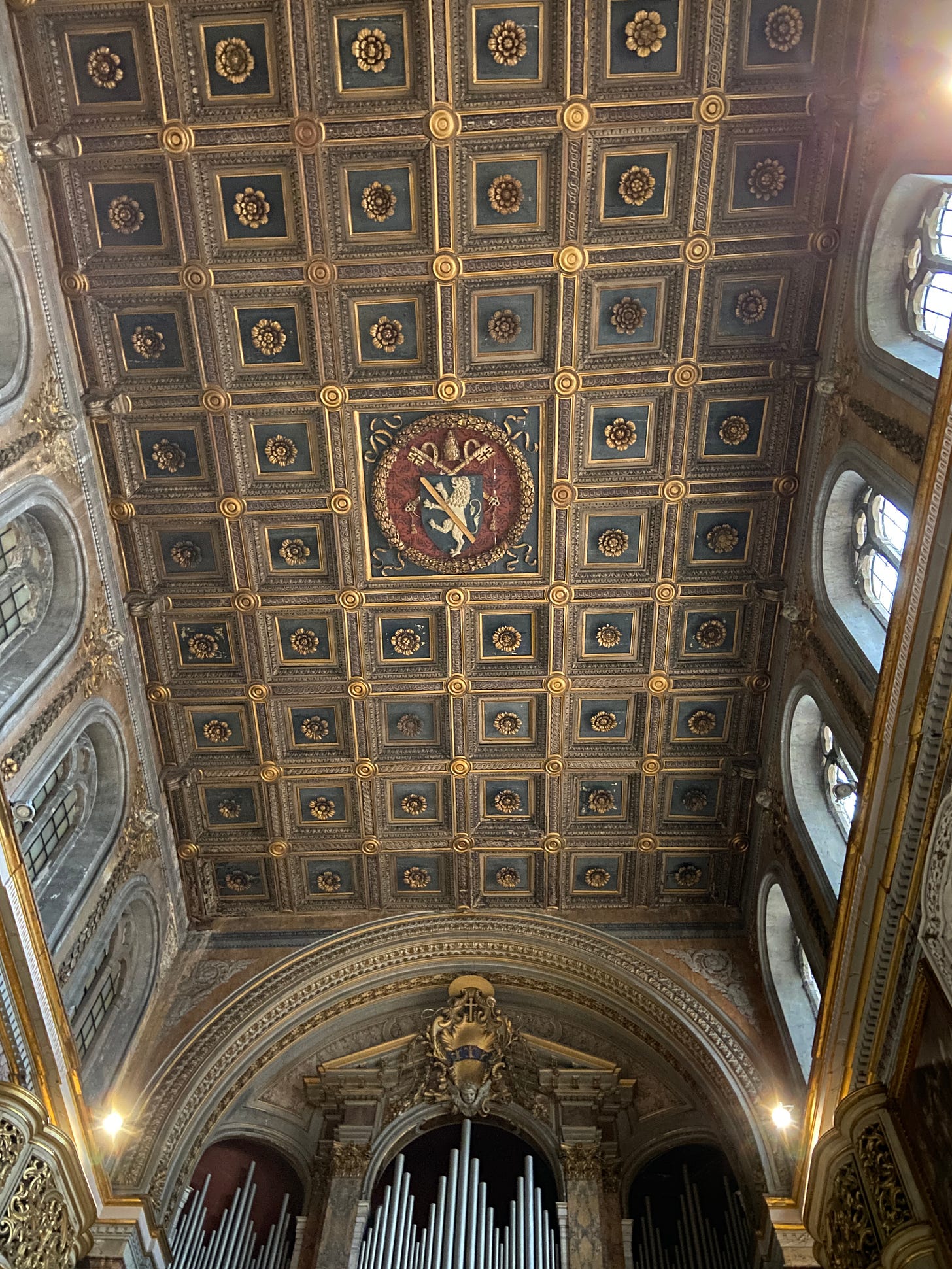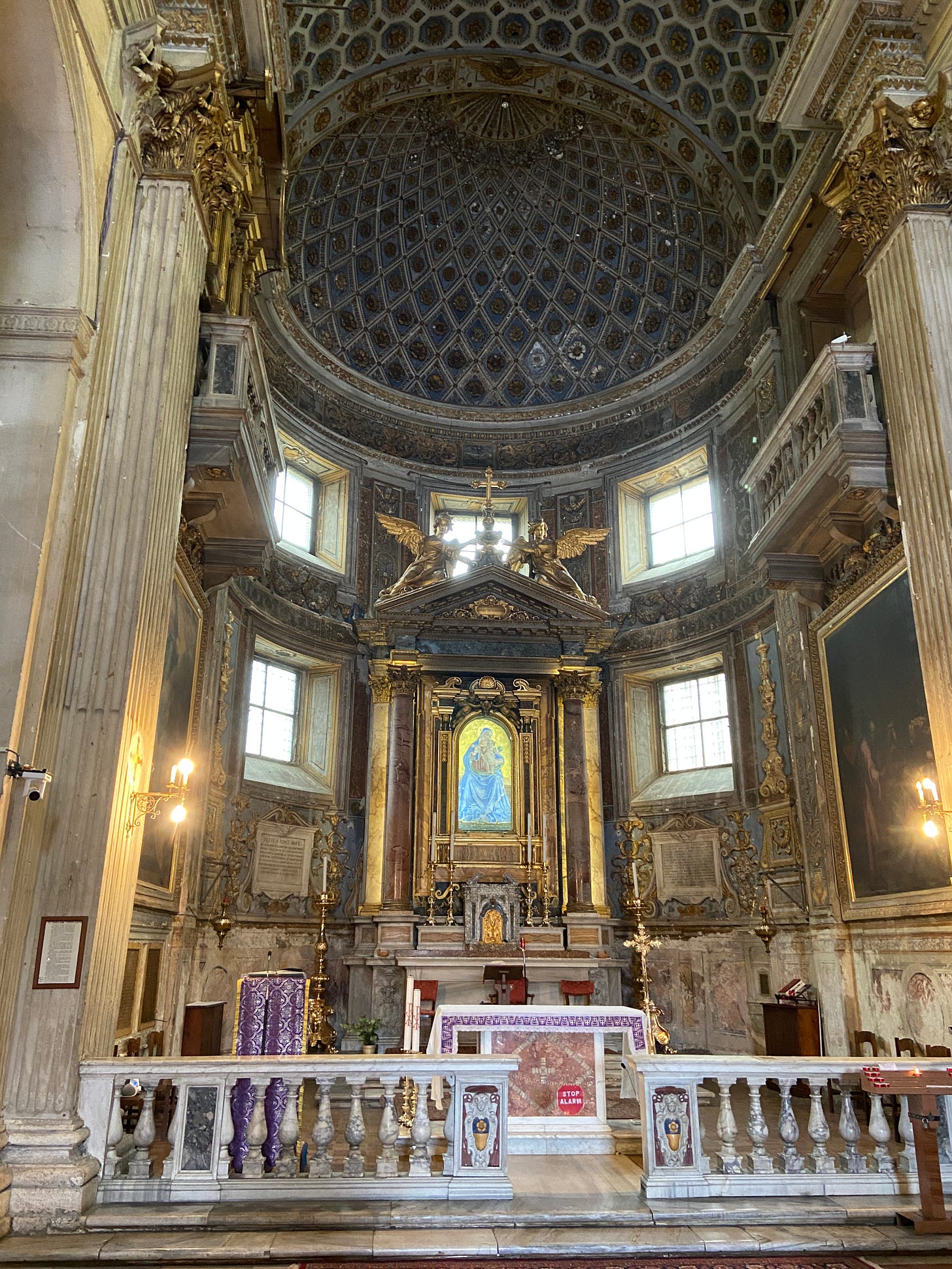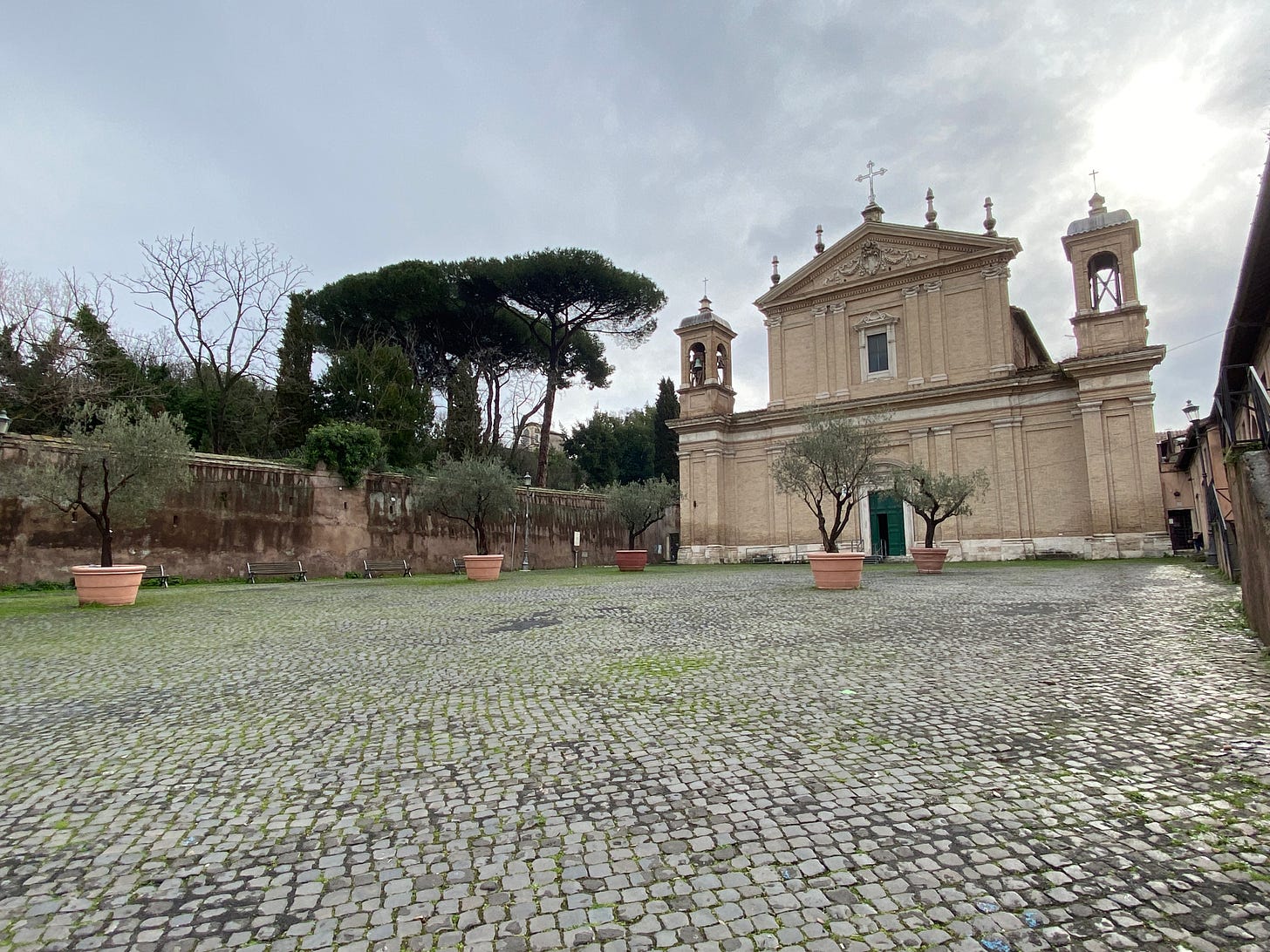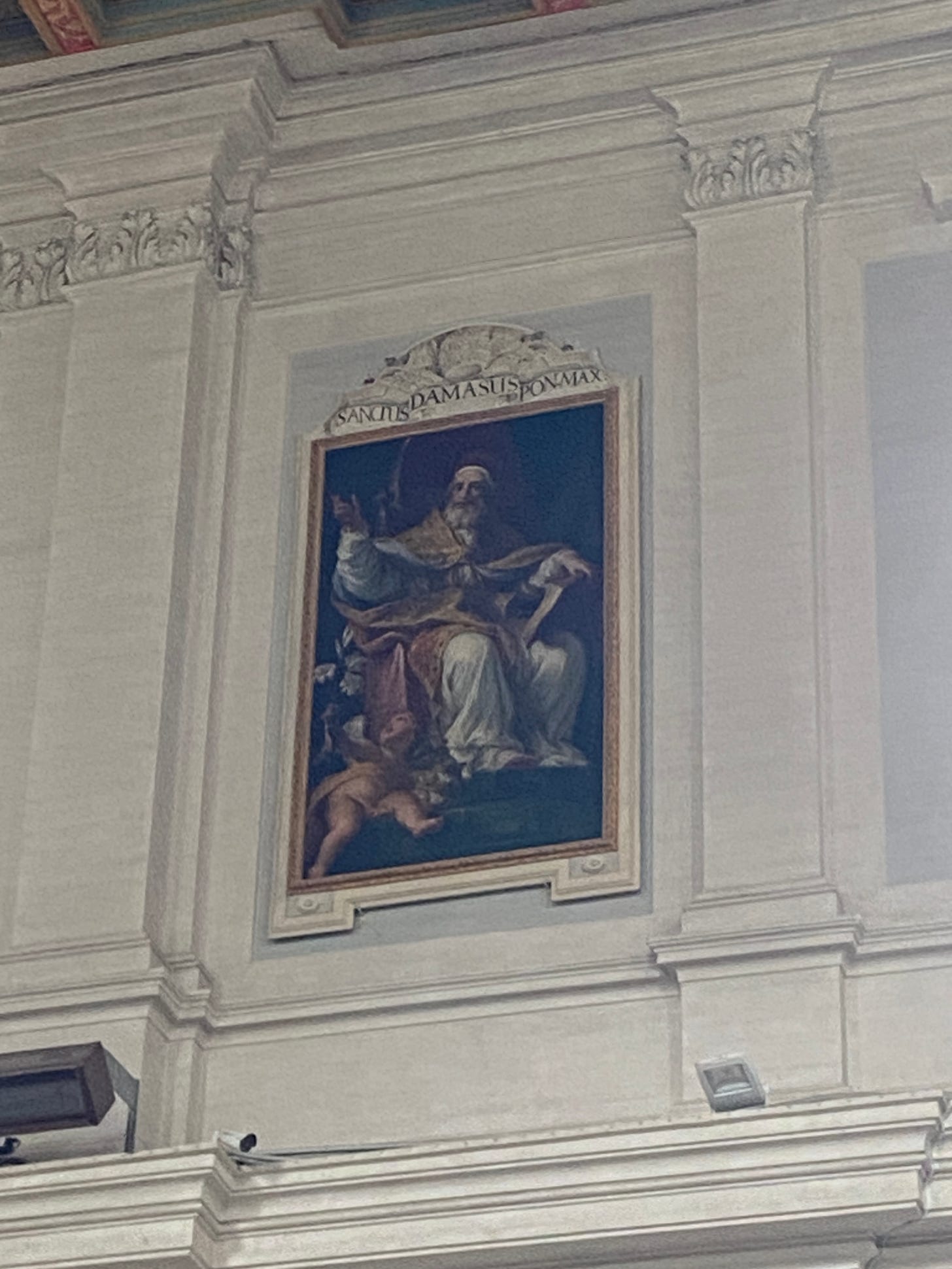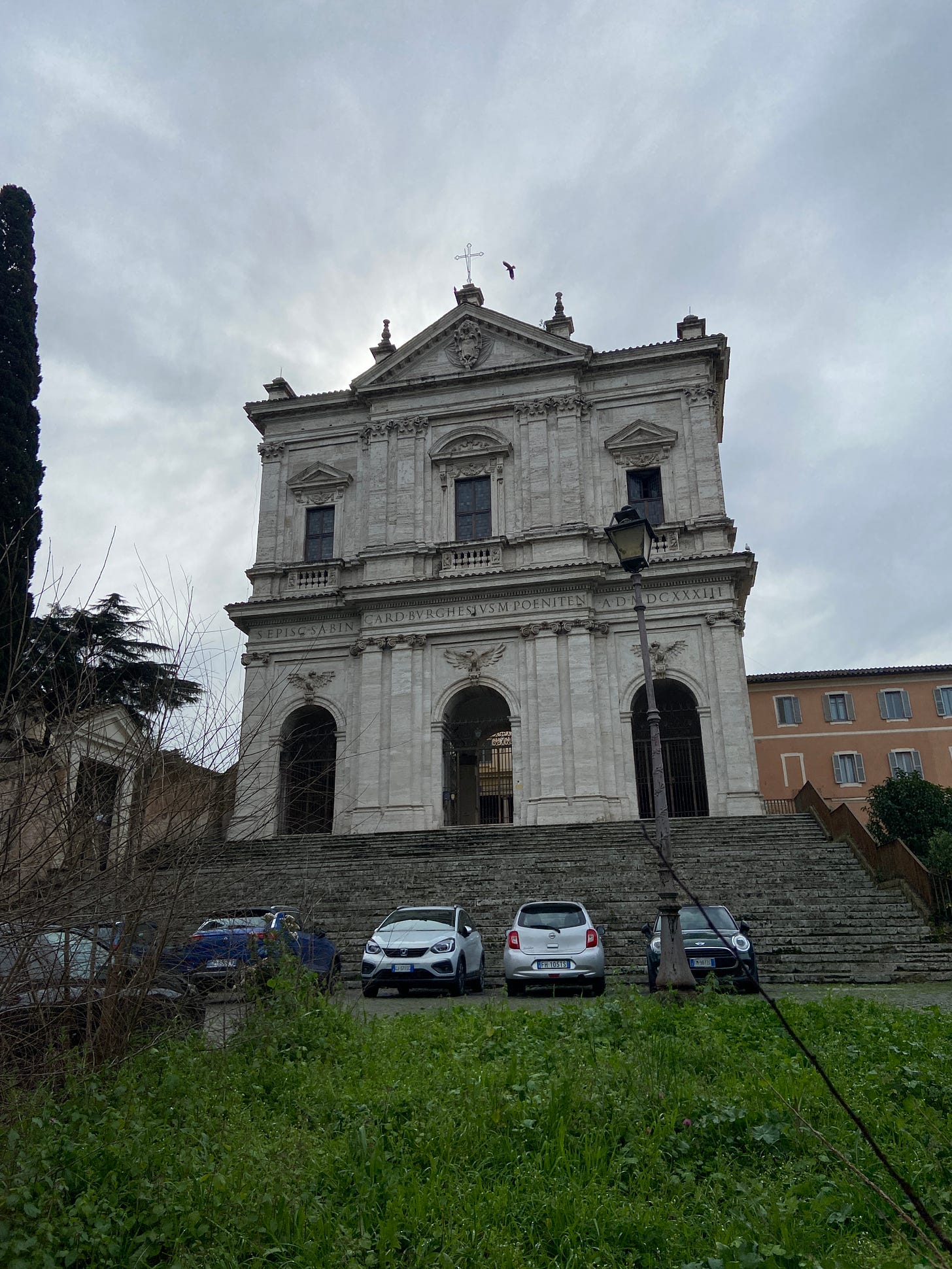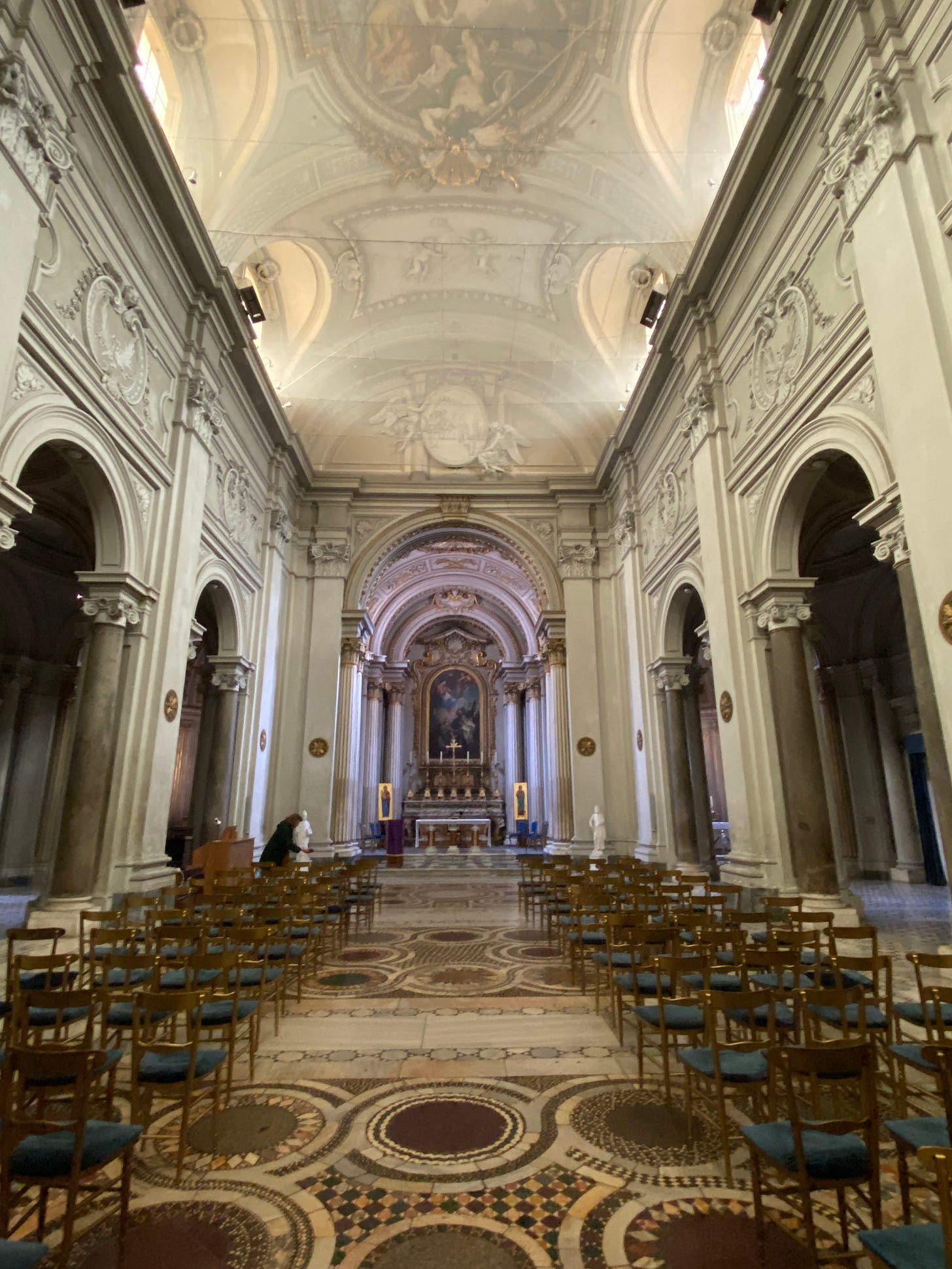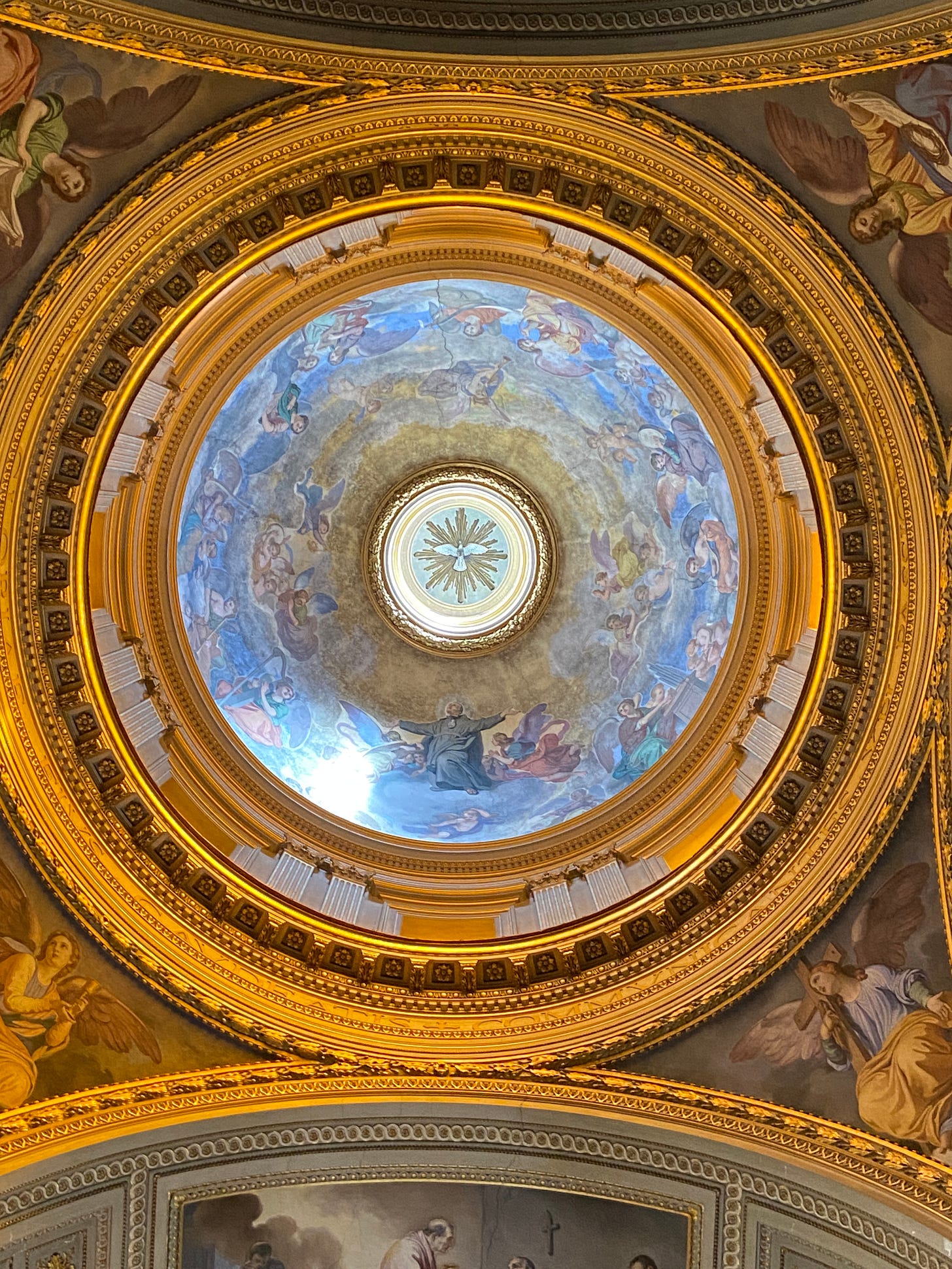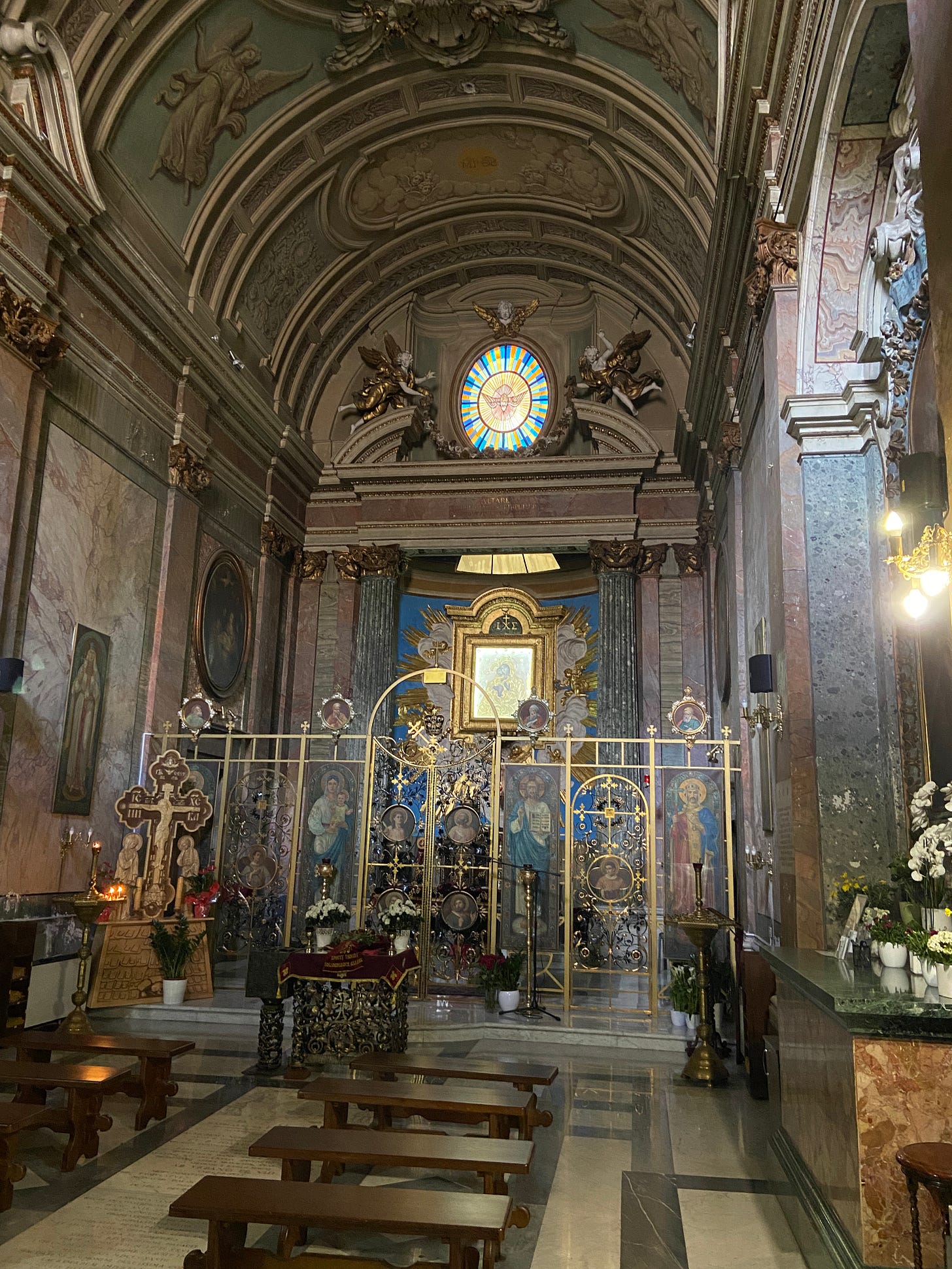Hidden treasures in old Rome: Day 5
Today in Papal History is posting from Rome through the end of this week
The beginning of a new week kicked off with another Mass at one of the Roman station churches with fellow American pilgrims, seminarians, and priests – this time at the Basilica of St. Mark the Evangelist in Campidoglio, right next to Rome’s famous Piazza Venezia.
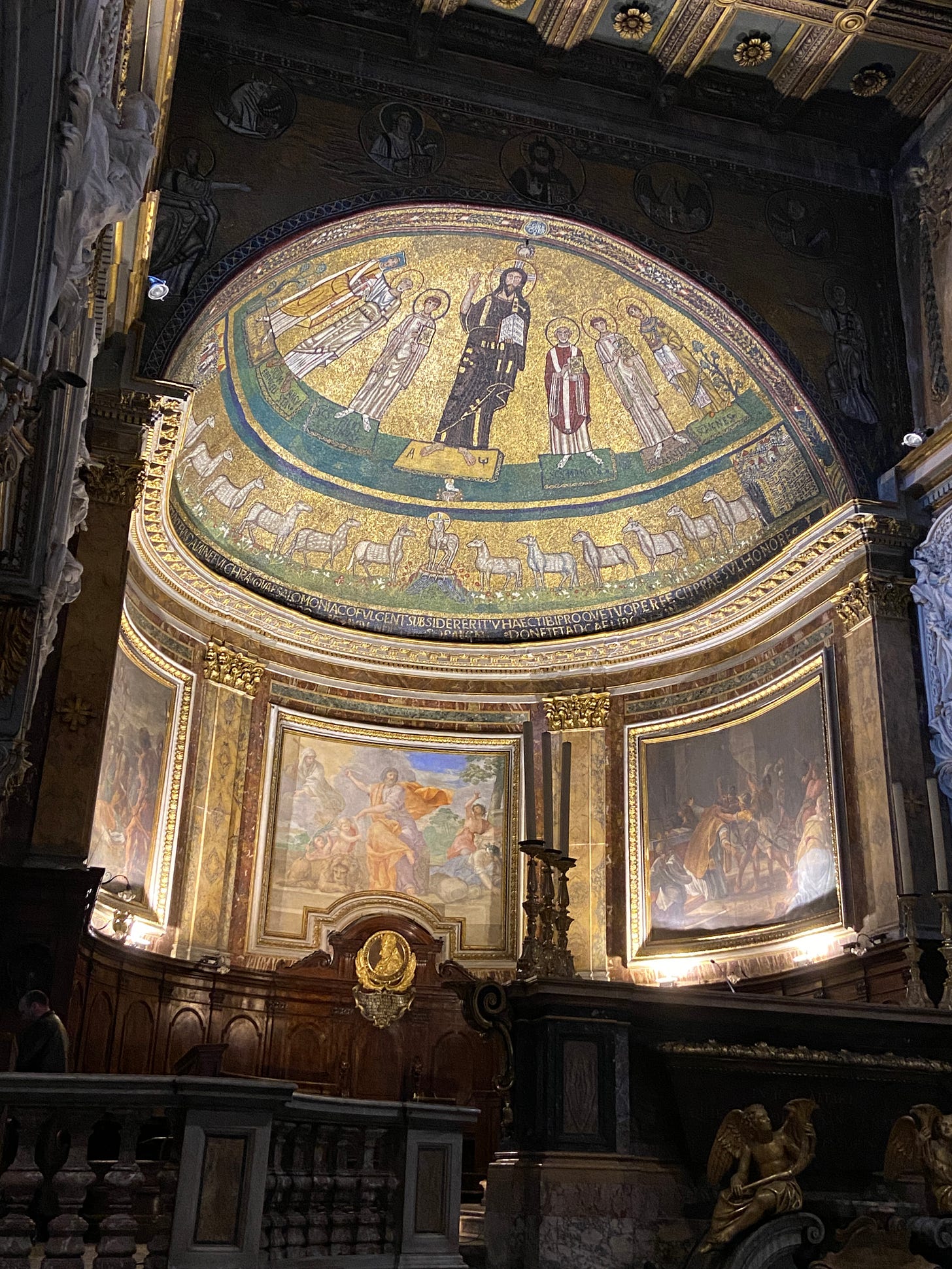
Although it’s dedicated to St. Mark the Evangelist, author of one of the four Gospels, I learned only after Mass that it’s also the resting place of Pope St. Mark, who reigned over the Catholic Church in the year 336 A.D. for just 10 short months, considering he was the man who commissioned construction of the original basilica nearly 17 centuries ago.

It was later restored and rebuilt several times by several other pontiffs through the years. The apse mosaic shows Pope Gregory IV (with a square halo to indicate that he was still living), who did work on the church in the 9th Century, along with Pope St. Mark, and other saints. Pope Paul II is also depicted in the golden shield beneath the apse, and his crest adorns the original 15th-Century wooden ceiling – one of just two remaining in Rome (St. Mary Major being the other).
After leaving the basilica, I headed off at Fr. Ned’s recommendation in a direction I hadn’t yet taken – further into old Rome toward the Circus Maximus beyond the Roman Forum, where several hidden ruins and lesser-known churches sat waiting to be discovered.
The walk through that part of Rome felt much more like walking through a garden than walking in a large city – next to no one was out wandering around in that area at that time of the day, and the wet roads from the early morning rain only added to the effect.
Our Lady of Consolation and San Giorgio al Velabro, the first two churches I encountered, were simple and beautiful.
However, a bigger surprise – papal-ly speaking – waited for me at the Church of St. Anastasia down the road. It, like the Basilica of St. Mark, had been founded in the 4th Century likely with the help of Pope St. Damasus (famous for being the one to codify the canon of Scripture as we know it today), especially considering the painting of him that adorned the right nave wall near the altar:
From there I stopped for some coffee and a croissant (because of course) next to the Circus Maximus, and set my sights on the ancestral home of Pope St. Gregory the Great – one of my all-time favorites.
St. Gregory lived during the 500s and belonged to the ancient Roman Anicii family, so his family home was in a prestigious part of town for centuries. Gregory’s life, however, came when Rome was in the process of being literally and figuratively burnt to the ground.
When Gregory came of age, following the death of his father, his mother retired to a convent and Gregory turned their home into a monastery as he entered religious life as a Benedictine. It was here that Gregory wished to live out his days, but his administrative skill and profound holiness prevented that from happening. Even still, while Gregory begrudgingly was forced to move on to bigger and better things (Gregory would argue about the latter), his monastery remains, and the present church of San Gregorio al Celio still sits on that very spot, over 1400 years after his death.
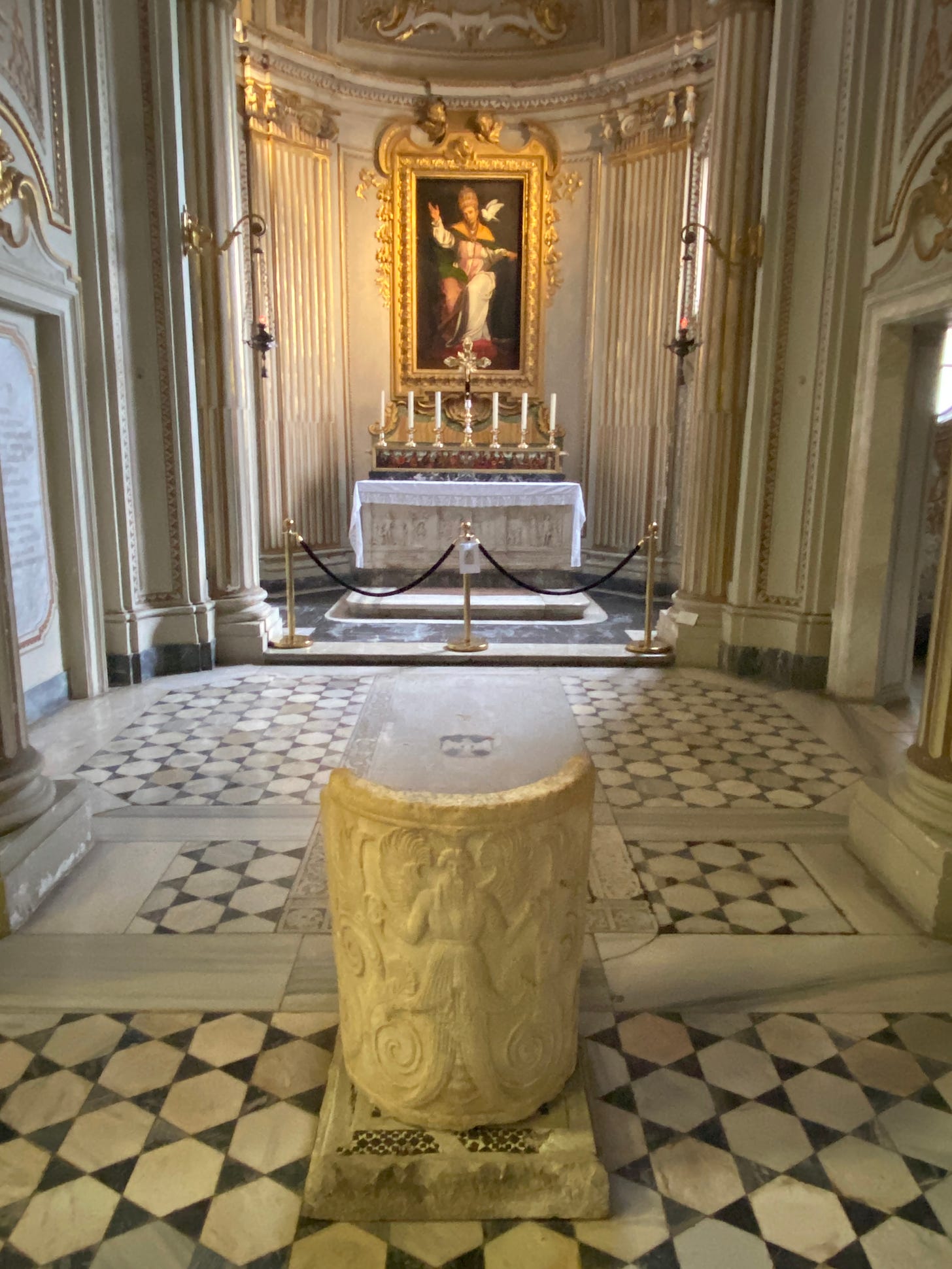
While it very well could be my affinity for St. Gregory, this church was my favorite thus far (outside of the big ones).
—
I also stopped into the Church of Sts. John & Paul, the burial place of Passionist founder St. Paul of the Cross, which had a stunning dome above the chapel where he’s entombed.
I stumbled on the tiny Santi Sergio e Bacco Byzantine Catholic church that had some particularly resplendent iconography.
After meeting back up with Fr. Ned to make our way to dinner with the Diocese of Helena seminarians, we stopped at the Church of the Gesú (home of the Jesuits), Santa Maria dell'Anima (the German national church in Rome), the Basilica di Santa Maria sopra Minerva, and briefly the Basilica of St. Augustine (burial place of his mother, St. Monica).
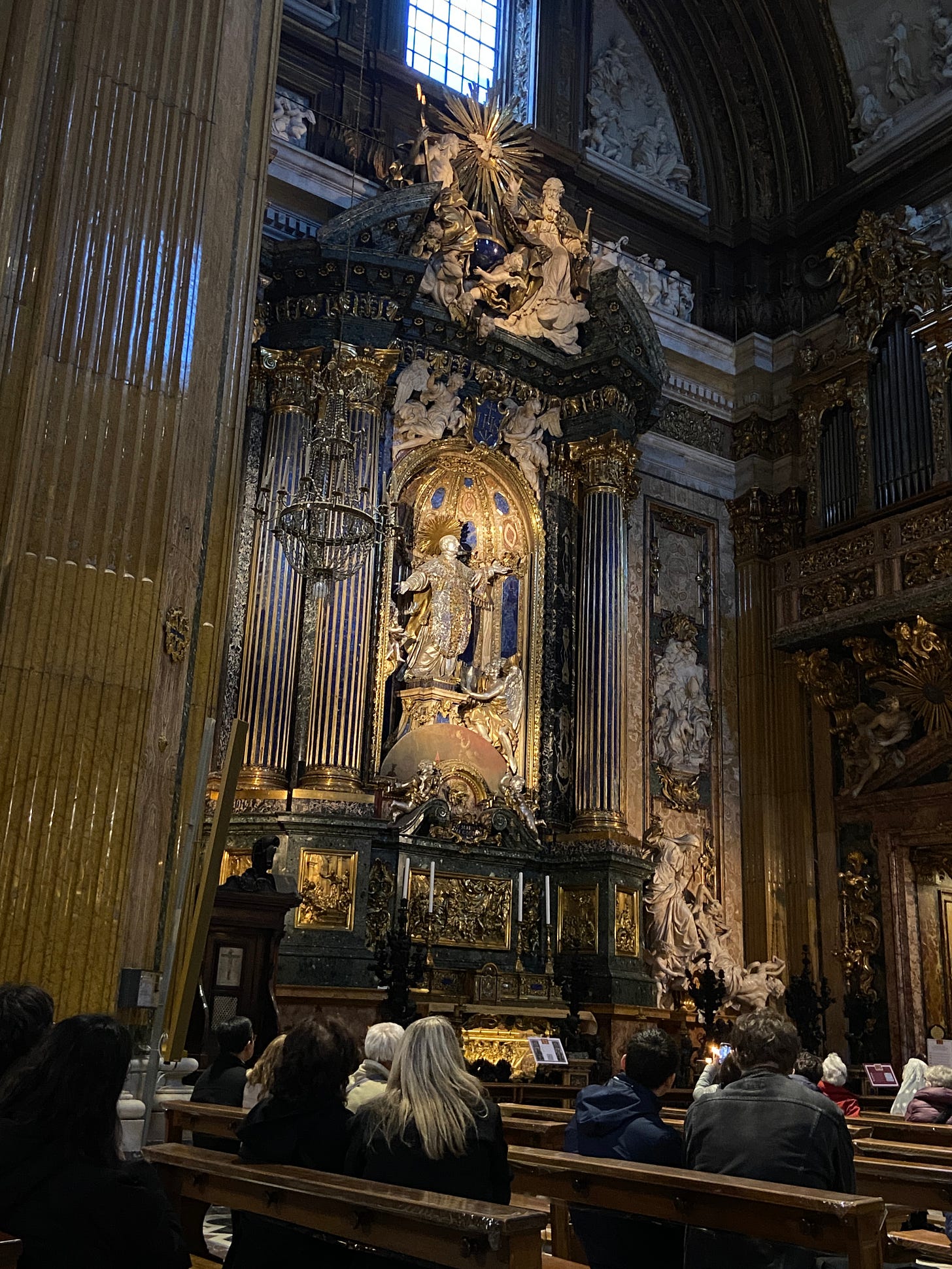
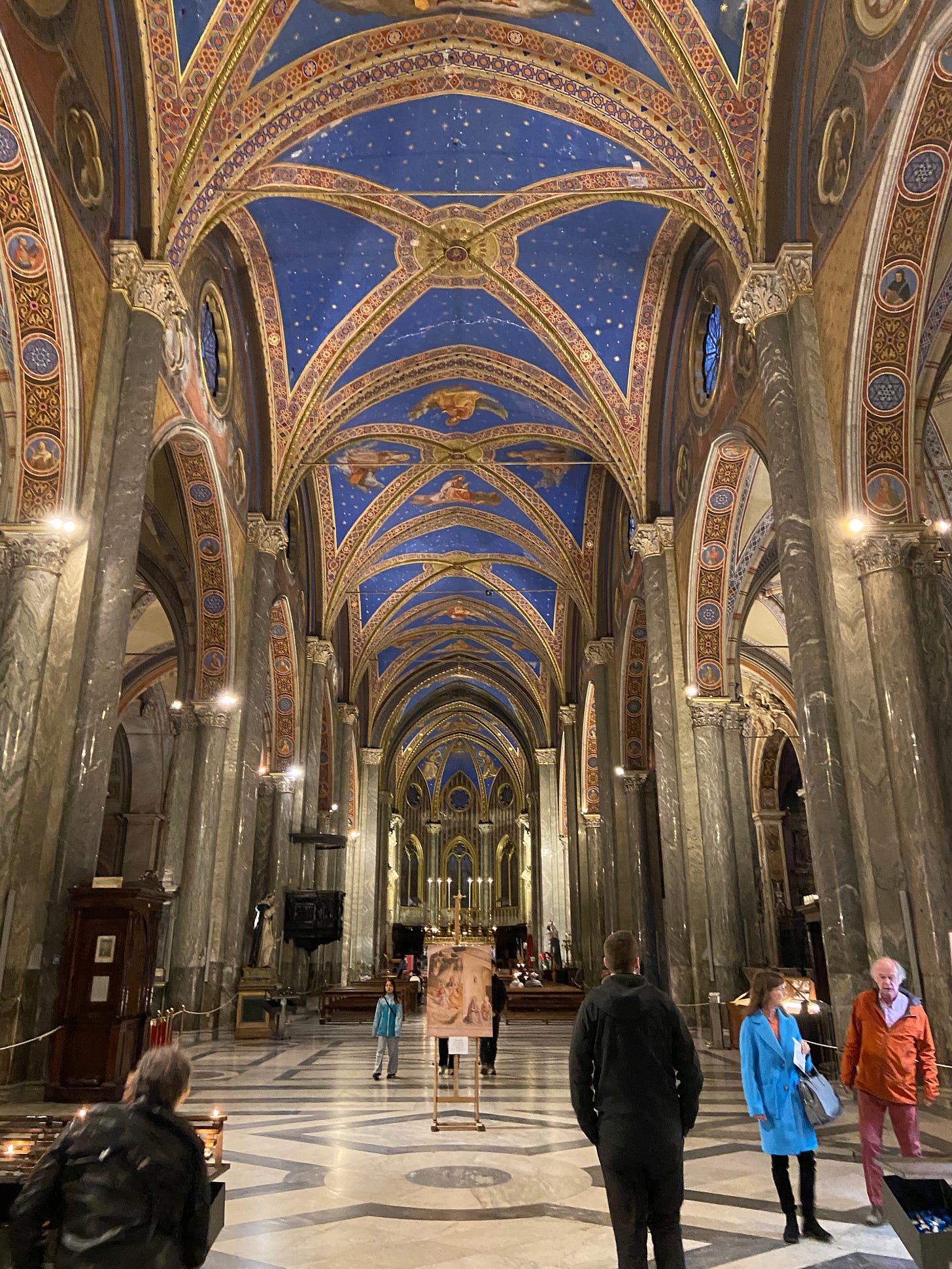
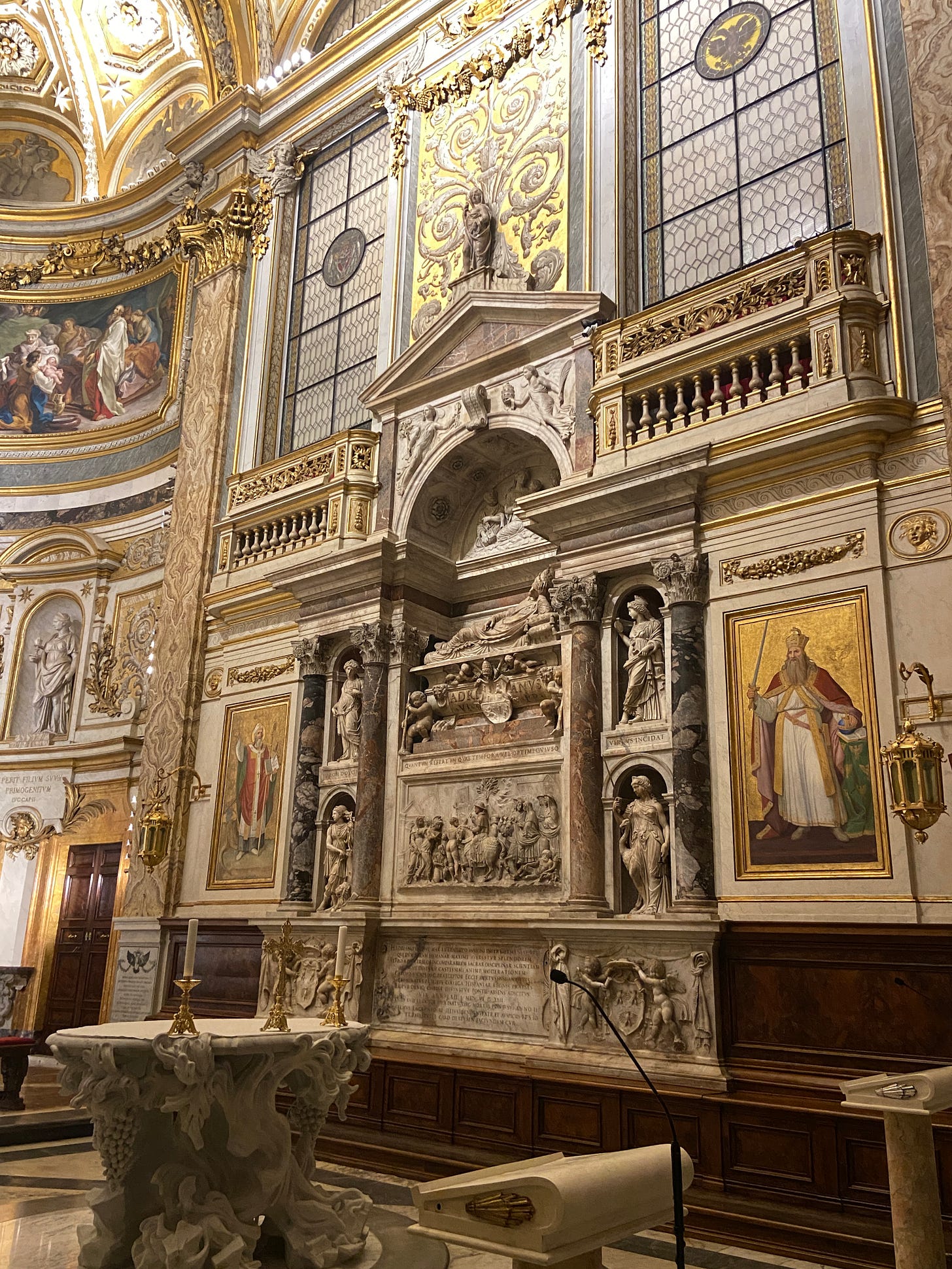
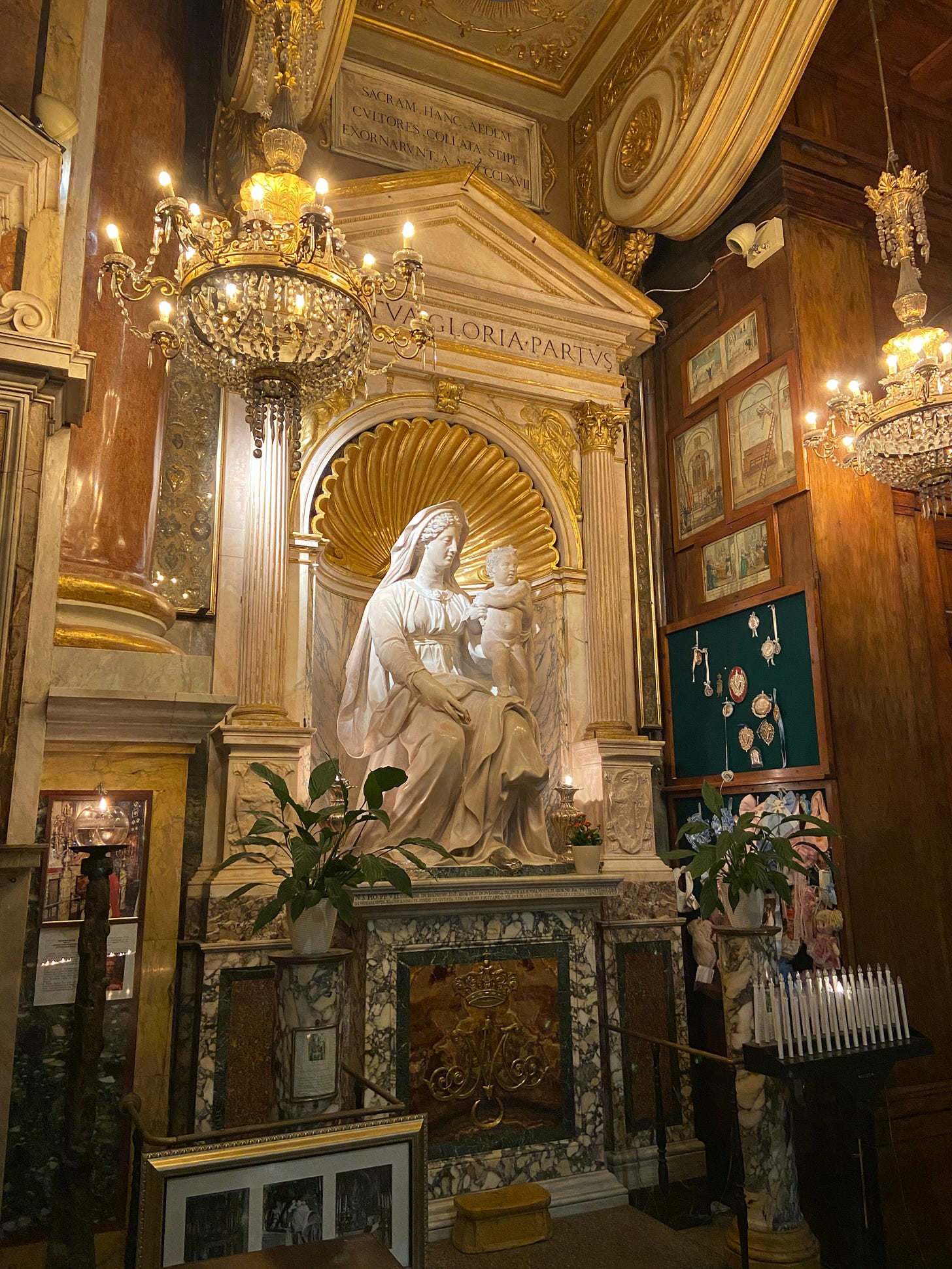
And last but not least, we found this massive St. George bronze in a gift shop across the piazza from one of the churches (I can’t remember which). I’m not sure there’s any luggage big enough to fit that thing.
A big day for sure. Thanks for reading. See you tomorrow!




